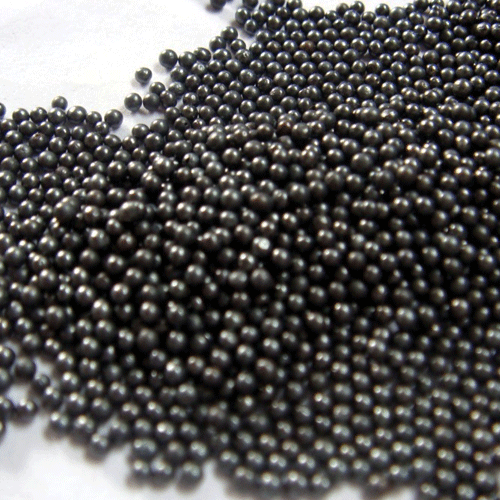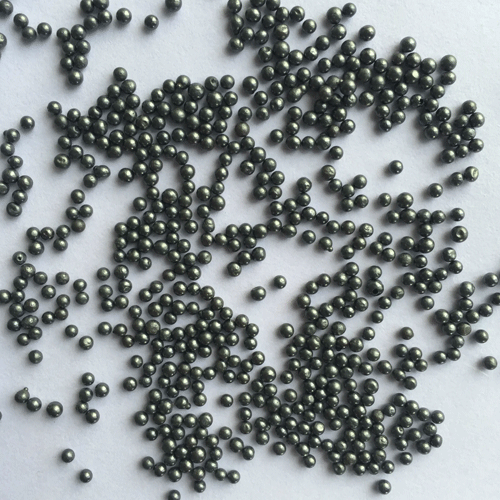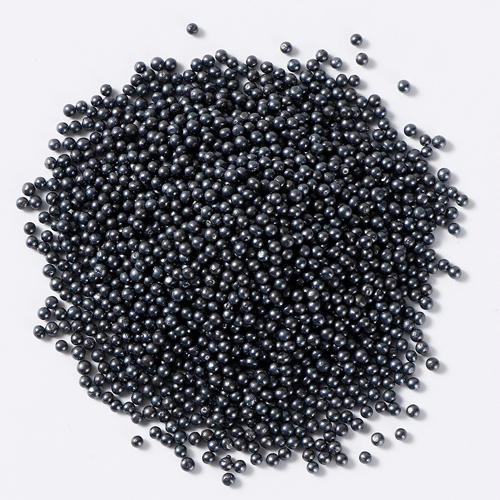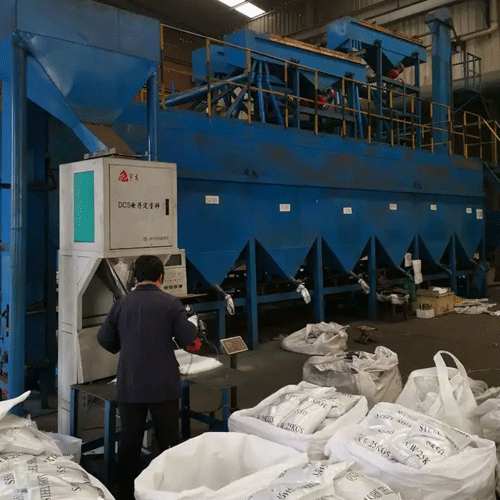1: Truth: The darker and brighter the appearance of the steel shot, it means that the heat treatment temperature in the production process is too high, which reduces the carbon content in the steel shot during production, so that the hardness of the steel shot becomes lower, and the steel shot is in the process of beating Easily deformed.
Conclusion: The darker and brighter the appearance of the steel shot, the more attractive it is, the less useful it is.
2. Are the recycled steel shot (referred to as "return shot") effective?
Truth: The return shot is more resistant to impact than the new steel shot, but the source of the return shot is uneven. It is recycled from alloy steel shot, steel wire cut shot and other kinds of steel shot after hitting, so the composition is not uniform and the particle size is different. Uniformity, which seriously affects the gloss and roughness of the workpiece after hitting.
The production of steel shot requires heat treatment and quenching, so we must pay attention to these issues to ensure the quality of the steel shot. The carbon content of the steel shot determines the hardness and quality of the steel shot, so everyone should pay attention to this question.
There are two cooling methods for steel after quenching and heating, one is isothermal cooling, that is, isothermal quenching; the other is continuous cooling, that is, ordinary quenching. Isothermal cooling can obtain pearlite, sorbite, troostite, bainite, etc. according to needs, while ordinary quenching is to obtain martensite. All kinds of steel parts, mechanical parts, tools and molds must be used after quenching and tempering. The strengthening and hardening during quenching is due to the formation of martensite.There are two basic forms of martensite, one is lath martensite, as shown in Figure a, which is composed of groups of laths under the crystal phase microscope; the other is sheet martensite, which is formed in the crystal phase It looks like a bamboo leaf under the microscope. In terms of performance, lath martensite not only has high hardness, but also has good toughness; while sheet martensite has high hardness and poor toughness, and is typically hard and brittle. It needs to be tempered to sacrifice hardness to improve toughness. , we hope that the workpiece will get more lath martensite after quenching. In actual production, the steel with a carbon content of less than 0.2% will produce lath martensite after quenching, and the steel with a carbon content of 0.2-1.0% will form a mixture of lath martensite and sheet martensite after quenching. Microstructure, the steel with carbon content higher than 1.0% almost all forms flaky martensite after quenching.While the carbon content determines the martensite morphology, we can adjust the process to maximize the properties of the part. Low-carbon steel and low-carbon alloy steel have poor hardenability, so we can obtain almost all lath martensite by using strong quenching (cold brine), and obtain a good combination of high strength and toughness. Medium carbon (carbon content 0.3%-0.6%) steel or medium carbon alloy steel is widely used steel, its carbon content is between 0.2-1.0%, quenching to form a mixed structure of lath martensite and sheet martensite , These steels are heated and quenched at high temperature to obtain more lath martensite, which can greatly improve the toughness of the steel without changing the hardness. For high-carbon steel parts, in order to obtain more lath martensite, a method of rapid and short-term heating and quenching at a lower temperature can be adopted.
It can be seen that the same material can obtain more ideal properties through a more reasonable quenching process.
 How to judge the quality of steel shot
How to judge the quality of steel shot
 Summary of hardness of several common steel shot and steel grit
Summary of hardness of several common steel shot and steel grit
 The formation process of steel shot
The formation process of steel shot
 Steel shot centrifugal pill forming technology is the preferred choice for producing national standard steel shots
Steel shot centrifugal pill forming technology is the preferred choice for producing national standard steel shots